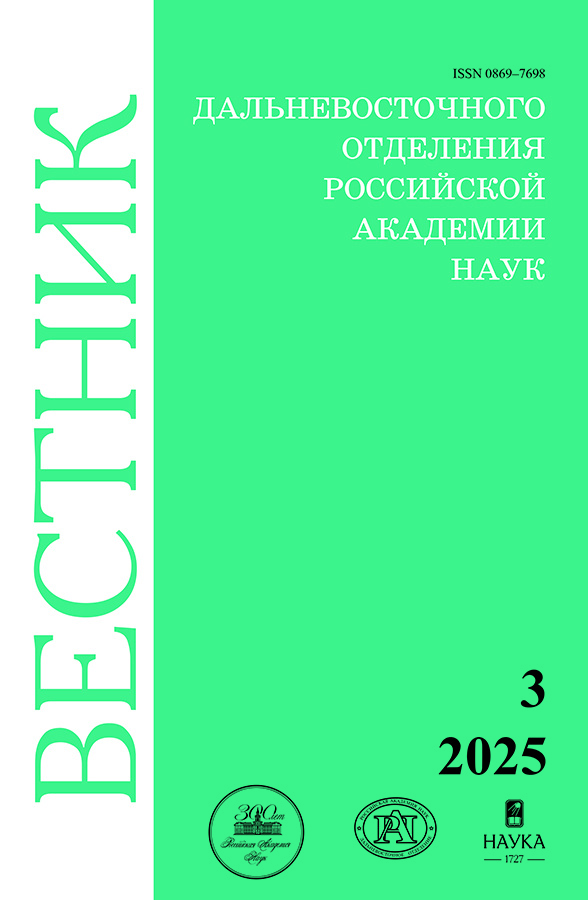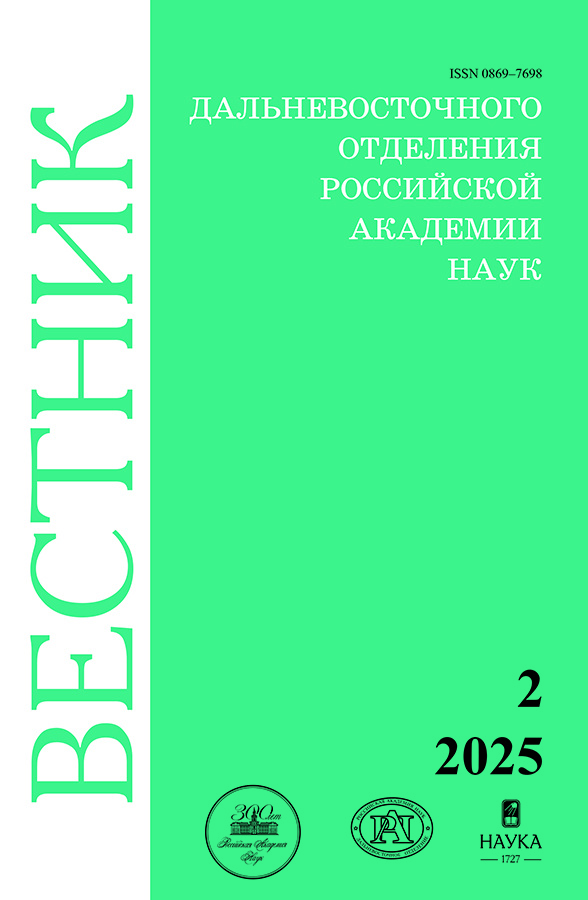Assessment of the prospects of oil and gas-bearing areas in the waters of the Sea of Okhotsk based on the results of the application of probabilistic and statistical analysis of geological and geophysical data
- Authors: Kharitonov A.L.1
-
Affiliations:
- Pushkov Institute of Terrestrial Magnetism, Ionosphere and Radio Wave Propagation of Russian Academy of Sciences
- Issue: No 2 (2025)
- Pages: 33-44
- Section: Earth and Environment Sciences
- URL: https://permmedjournal.ru/0869-7698/article/view/687226
- DOI: https://doi.org/10.31857/S0869769825020036
- EDN: https://elibrary.ru/GFIKNV
- ID: 687226
Cite item
Full Text
Abstract
The article presents the results of the application of the probabilistic and statistical method of forecasting the prospects of oil and gas-bearing areas in the waters of the Sea of Okhotsk. The method is based on the use of a preliminary analysis of statistical series of several different types of geological and geophysical parameters. The object of the study of this article is the local concentric structures in the waters of the Sea of Okhotsk. The subject of this article is the forecast of oil and gas bearing areas. The results of using a probabilistic statistical method for predicting the prospects of oil and gas-bearing areas for four types of different geological and geophysical data (crustal thickness, lithosphere thickness, sedimentary rock thickness, heat flux values) measured within the location of fifteen local concentric structures in the Sea of Okhotsk are considered. Based on these data, statistical histograms of the spatial distribution of the values of the thickness of the earth’s crust, the thickness of the lithosphere, and the values of heat flux were previously constructed according to measurements in the main oil-producing regions of the Okhotsk, Black, and Caspian Seas. As a result, using the probabilistic forecasting method, the values of the probability distribution densities were calculated according to the data of various four geological and geophysical parameters. According to the calculated probability values for fifteen concentric structures of the Sea of Okhotsk, according to four types of geological and geophysical parameters, a summary data table was compiled and eight local concentric structures promising for the search for new oil and gas fields were identified.
Full Text
About the authors
Andrey L. Kharitonov
Pushkov Institute of Terrestrial Magnetism, Ionosphere and Radio Wave Propagation of Russian Academy of Sciences
Author for correspondence.
Email: ahariton@izmiran.ru
ORCID iD: 0000-0002-0843-452X
Candidate of Sciences in Physics and Mathematics, Leading Researcher
Russian Federation, MoscowReferences
- Timurziev A.I. The myth of “energy hunger” from Hubbert and the ways of reproduction of the resource base of Russia on the basis of the implementation of the project “Deep Oil”. Drilling and Oil. 2019;(1):12–20. (In Russ.).
- Valyaev B.M. Hydrocarbon degassing of the Earth, geotectonics and the origin of oil and gas (recognition and development of the ideas of P.N. Kropotkin). Degassing of the Earth and the Genesis of Oil and Gas Fields: Mater. Vseros. conf., dedicated to the 100th anniversary of the birth of P.N. Kropotkin. Moscow: GEOS; 2011. P. 10–32. (In Russ.).
- Syvorotkin V.L. Deep degassing of the Earth and global catastrophes. Moscow: Geoinformtsentr; 2002. 250 p. (In Russ).
- Seiful-Mulyukov R.B. Oil and gas. Deep nature and its applied significance. Moscow: Torus Press; 2012. 216 p. (In Russ.).
- Soloviev V.V. (Ed.) Map of morphostructures of the central type of the territory of the USSR. Scale 1:10 000 000 (Explanatory note). Moscow: Aerogeologiya; 1981. 44 p. (In Russ.).
- Eppelbaum L.V. Localization of Ring Structures in Earth’s Environments. Journal of the Archaeological Soc. of the Slovakian Acad. of Sci. 2007;XLI:145–148.
- Eppelbaum L.V., Zvi B.A., Katz Y., Cloetingh S., Kaban M.K. Giant quasi-ring mantle structure in the African-Arabian junction: Results derived from the geological-geophysical data integration. Geotectonics. 2021;55(1):58–82. doi: 10.1134/S0016852121010052.
- Gavrilov S.V. Penetration of thermal diapirus into the continental lithospheric plate from the non-Newtonian upper mantle. Physics of the Earth. 1994;(7/8):18–26. (In Russ.).
- Marakushev A.A., Marakushev S.A. Endogenous hydrocarbons and organic substances on Earth and space objects. Degassing of the Earth and the Genesis of Oil and Gas Fields: Mater. All-Russian conf., dedicated to the 100th anniversary of the birth of P.N. Kropotkin. Moscow: GEOS; 2011. P. 42–68. (In Russ.).
- Kharitonov A.L. Methodology of forecasting the oil and gas prospects of the southern regions of the European part of Russia. Scientific Notes of the V.I. Vernadsky Crimean Federal University. Ser. Geography, Geology. 2023;4:175–179. (In Russ.).
- Chermak V. (Ed.) Geophysical fields, their nature and geological interpretation. Geodynamics. 1986;5(2):111–256. (In Russ.).
- Gavrilov S.V., Kharitonov A.L. Determination of the location of oil-prospective areas for exploration drilling in subduction zones based on the use of the thermodynamic method. Drilling and Oil. 2024;(1):38–43. (In Russ.).
- Belyaevsky N.A. The structure of the Earth’s crust of continents according to geological and geophysical data. Moscow: Nedra; 1981. 431 p. (In Russ.).
- Smyslov A.A. (Ed.) Map of Russia’s geothermal resources. Scale 1:30 000 000. Leningrad: VSEGEI; 1995. 1 p. (In Russ.).
- Bendat J., Piersol A. Measurement and analysis of random processes. Moscow: Mir; 1974. 464 p. (In Russ.).
- Dmitriev V.I. (Ed.) Computational mathematics and technology in exploration geophysics. Handbook of Geophysics. Moscow: Nedra; 1982. 222 p. (In Russ.).
- Nikitin A.A. Statistical methods for the identification of geophysical anomalies. Moscow: Nedra; 1979. 280 p. (In Russ.).
Supplementary files











